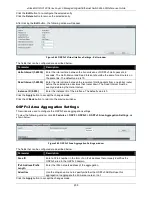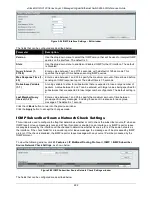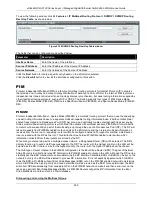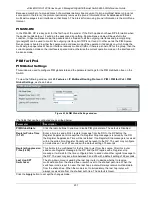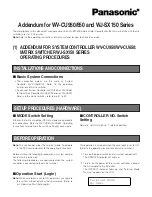
xStack® DGS-3120 Series Layer 3 Managed Gigabit Ethernet Switch Web UI Reference Guide
216
Figure 5-87 OSPFv3 Virtual Neighbor Table window
The fields that can be configured are described below:
Parameter
Description
Area ID
Enter the transit area where the virtual neighbor is built.
Neighbor ID
Enter the router ID of the virtual neighbor.
Click the
Find
button to find the specified entry.
Click the
View All
button to view all the entries.
RIP (RI Mode Only)
The Routing Information Protocol is a distance-vector routing protocol. There are two types of network devices
running RIP - active and passive. Active devices advertise their routes to others through RIP messages, while
passive devices listen to these messages. Both active and passive routers update their routing tables based upon
RIP messages that active routers exchange. Only routers can run RIP in the active mode.
Every 30 seconds, a router running RIP broadcasts a routing update containing a set of pairs of network addresses
and a distance (represented by the number of hops or routers between the advertising router and the remote
network). So, the vector is the network address and the distance is measured by the number of routers between
the local router and the remote network.
RIP measures distance by an integer count of the number of hops from one network to another. A router is one hop
from a directly connected network, two hops from a network that can be reached through a router, etc. The more
routers between a source and a destination, the greater the RIP distance (or hop count).
There are a few rules to the routing table update process that help to improve performance and stability. A router
will not replace a route with a newly learned one if the new route has the same hop count (sometimes referred to
as ‘cost’). So learned routes are retained until a new route with a lower hop count is learned.
When learned routes are entered into the routing table, a timer is started. This timer is restarted every time this
route is advertised. If the route is not advertised for a period of time (usually 180 seconds), the route is removed
from the routing table.
RIP does not have an explicit method to detect routing loops. Many RIP implementations include an authorization
mechanism (a password) to prevent a router from learning erroneous routes from unauthorized routers.
To maximize stability, the hop count RIP uses to measure distance must have a low maximum value. Infinity (that is,
the network is unreachable) is defined as 16 hops. In other words, if a network is more than 16 routers from the
source, the local router will consider the network unreachable.
RIP can also be slow to converge (to remove inconsistent, unreachable or looped routes from the routing table)
because RIP messages propagate relatively slowly through a network.
Slow convergence can be solved by using split horizon update, where a router does not propagate information
about a route back to the interface on which it was received. This reduces the probability of forming transient
routing loops.
Summary of Contents for xStack DGS-3120 Series
Page 1: ......








